Health and Aesthetics: The Role of Braces in Bite Correction
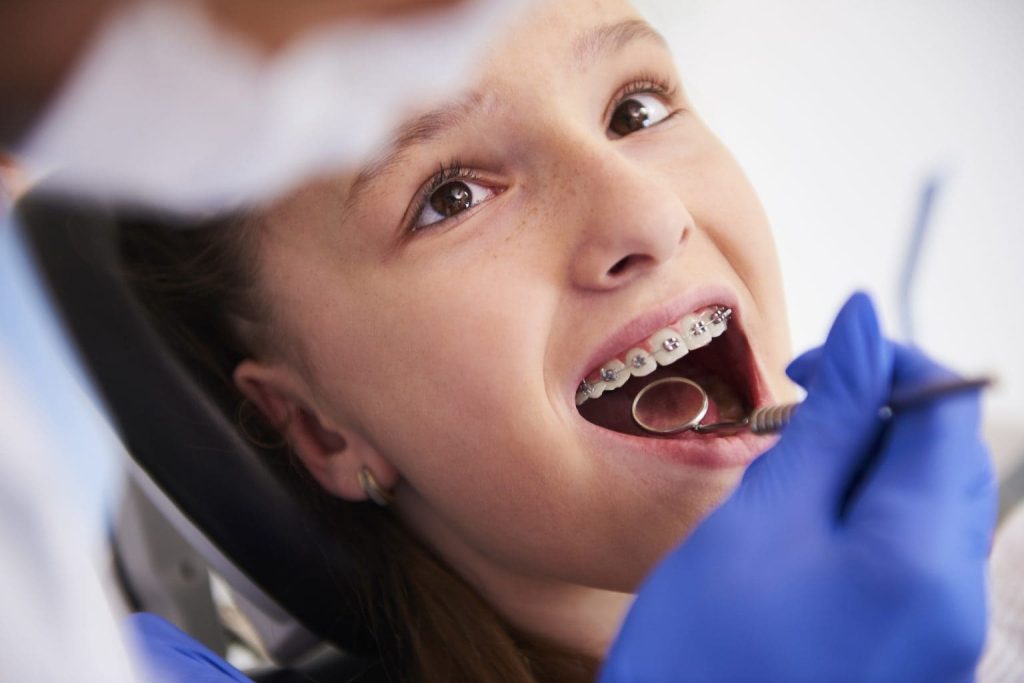
Contents:
Bad bite can lead to problems such as tooth erosion, headaches, and digestive disorders due to insufficient chewing of food. In some cases, the general well-being deteriorates, and a person experiences psychological discomfort.
It is necessary to consult an orthodontist to identify and solve problems with the bite. The specialist will choose a type of treatment specific to your case, which will:
- aligns the teeth;
- normalize the jaw relationship;
- close large interdental spaces.
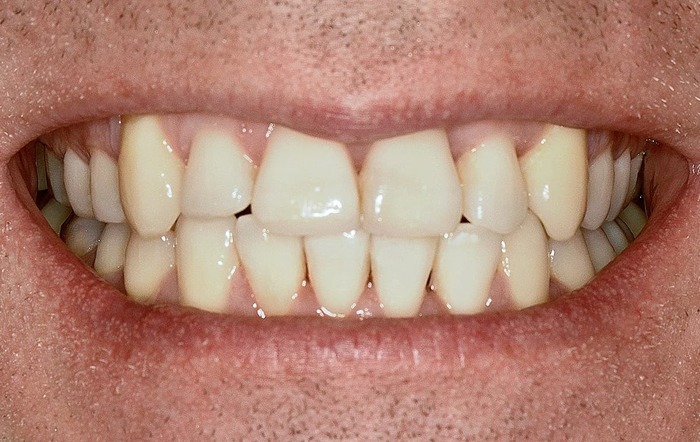
Orthodontic treatment is a long process. Patients will require regular visits to the dentist, who will monitor progress and adjust the treatment plan to achieve optimal results. To keep teeth healthy, patients must learn how to care for the braces properly.
Types of Braces: Which Ones to Choose for Your Age and Needs
The patient’s age plays an essential role in selecting braces because of the development of the jaws. The jawbone is still developing in children and adolescents, and the orthodontic appliance must be adapted to this. In adults, jaw development is already complete, which can influence the choice of bracket types and correction methods.
In addition, the patient’s age affects the effectiveness of the bite correction. Due to the physiological characteristics of children and adolescents, treatment is usually faster.
Expert Advice: Choosing Braces for Optimal Results
In addition to age, when selecting a method of tooth alignment, the doctor considers:
- The type of bite and the severity of the pathology. Each case requires a specific treatment approach.
- The patient’s health condition – it is necessary to identify the risk of allergies to the materials and other aspects that may affect the appliance choice.
- Aesthetic preferences. Some dental clinic clients prefer not to draw attention to their teeth during treatment. They may be offered less noticeable ceramic, sapphire, or lingual braces or models in such cases.
Personalized approach: taking into account unique bite and age considerations
Every patient has unique needs, goals, and limitations. A personalized approach allows for considering all factors and tailoring the treatment to achieve optimal teeth alignment results.
Effectiveness of Braces in Correcting the Bite of Adolescents
In adolescents, the musculoskeletal system is in a stage of active development. During this period, it is possible to influence the teeth’ position and jaw alignment effectively. To achieve good results, it is enough for teenagers to wear an orthodontic appliance for 1.5-2 years.
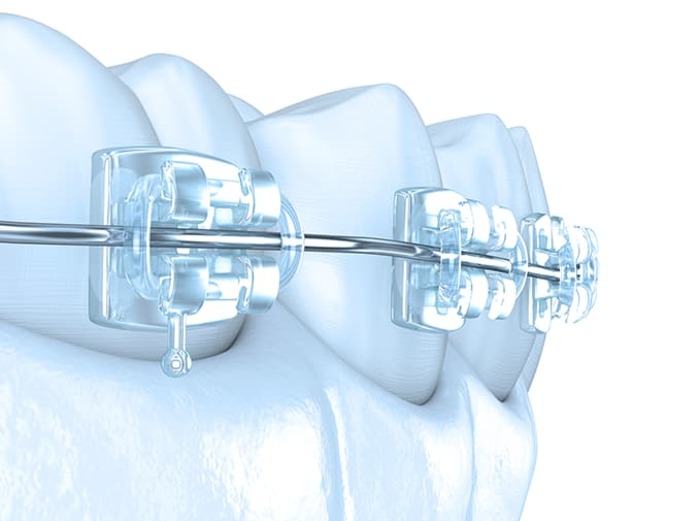
Types of Braces and Their Features for Different Age Groups
- Childhood (6-11 years)
When molars replace baby teeth, the bite can be corrected with special removable devices – plates with metal braces and silicone mouthguards. Full-fledged braces can be installed after the molars erupt, usually between 12 and 14 years of age.
Mild irregularities resulting from the development of the jaws over time can be leveled independently without orthodontic treatment. In any case, specialist supervision is necessary.
- Adolescence (12-17 years)
Standard bite correction systems can already be used. The choice of material depends on the peculiarities of pathology and preferences of the teenager. Most often, these are metal systems with colored ligatures. Shy young patients may get more aesthetic options made of ceramic or artificial sapphire.
- Adult age (18 years and older)
The jaw is already formed; it grows very slowly until age 20-21, so more effort is needed to align the teeth. Metal braces do an excellent job with this task. It can be a classic ligature system or a self-ligating appliance. For those who do not want to advertise the fact of treatment, lingual braces are suitable. But it would help if you remembered that they are more expensive and difficult to fit.
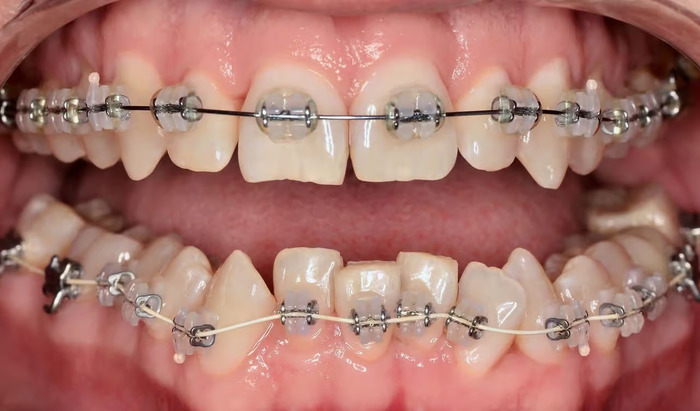
Invisalign transparent mouthguards are suitable for minor bite disorders. A set is made for the entire treatment period, and a specialist changes the elements when needed.
How Do I Keep My Teeth Clean and Healthy While Wearing Braces?
During orthodontic treatment, it is essential to clean your teeth regularly. Good hygiene:
- Prevents plaque and tartar build-up
Braces create extra spaces where food debris can easily stick. If not removed, bacteria can actively multiply, soft and hard plaque can form, and tooth decay can develop.
- Maintains healthy gums
Poor dental care while wearing braces leads to gum irritation and inflammation. Regular and thorough cleaning helps prevent the development of gingivitis and periodontal disease.
- Improves the aesthetics of the smile
Thorough cleaning keeps your teeth white and healthy throughout the entire correction process.

Key points when wearing braces:
- Quality daily oral hygiene
Not everyone knows how to take care of your braces. The process is not much different from a standard hygiene routine:
- Brush your teeth after every meal and before going to bed.
- Use a regular or orthodontic toothbrush, brush, or floss.
- We recommend the optional purchase of an irrigator. This pressurized device delivers a jet of water saturated with air to the teeth and washes away food debris and plaque from even the hardest-to-reach places.
- For interdental spaces, there is a portable Air-Floss device. It can be used instead of a conventional floss.
In case of oral mucosa discomfort, pain, or inflammation, mouthwashes will help. Different types of products are on the market, including special solutions for patients with braces. They can be used as directed, or you can make application/lotions – carefully study the manufacturer’s instructions.
See your dentist if the pain is severe enough and persists for a long time. You may need an unscheduled adjustment of the appliance.
- Change your diet
Avoid hard, sticky, and tough foods that damage your braces or orthodontic arch. Do not eat fibrous foods; they can get stuck between the appliance’s elements.
What can I eat with braces? Food should be soft, not requiring heavy chewing. Include in your diet:
- stewed vegetables;
- yoghurt;
- deboned boiled fish without bones;
- minced meat products;
- chicken, turkey fillets, etc.
Limit foods high in sugar and acids, which contribute to the destruction of tooth enamel and the development of tooth decay. Moreover, try to avoid beverages with food colouring, as they can affect the appearance of braces.
- Regular check-ups at the dentist, professional oral hygiene
Regular visits to the dentist will help keep your teeth in perfect condition. The specialist can see the problem at the initial stage and offer the best option for its solution. Professional tooth cleaning will help remove plaque and pigmentation, which are challenging to remove independently.
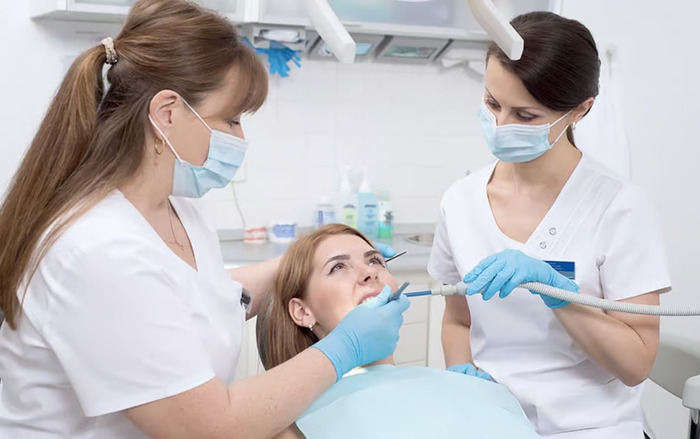
Personalized Care: Choosing the Right Braces For Your Needs
To correct your bite, you should see an orthodontist.
The selection of a brace includes:
- Assessment of your bite and tooth structure
A dental specialist will perform a visual examination, hardware diagnostics, layer-by-layer computed tomography, panoramic imaging of teeth (orthopantomography), and, if indicated – a CT scan. Modern methods allow us to understand the state of all tissues of the dentoalveolar system.
- Interview with the patient
To find out if there are:
- speech problems with pronunciation of certain types of sounds;
- temporomandibular joint disorders (one of the symptoms is crunching when moving);
- difficulties in chewing food;
- difficulty in brushing teeth, etc.
Discuss the patient’s aesthetic preferences, estimated treatment time, and possible limitations.
- Selection of the braces type
Based on the information obtained, the orthodontist proposes various appliance options:
- vestibular, lingual;
- metal, ceramic, sapphire;
- ligature, self-ligating.
The patient and the doctor choose braces that meet all the criteria.
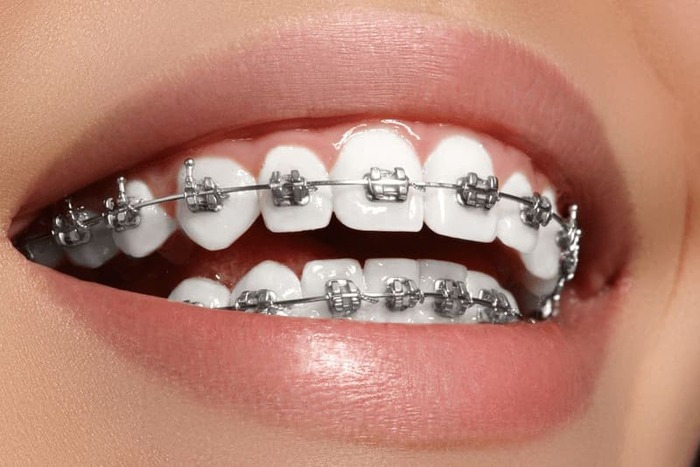
The next step is to draw up a personalized treatment plan, which considers:
- approximate timeframe for bite correction;
- the frequency of visits to the dental clinic;
- the sequence of steps to achieve optimal results.
Every person is unique, so the selection of braces is a personalized process that should meet the individual needs and desires of the patient. When visiting the orthodontist, it is essential to communicate and ask the doctor questions to evaluate all options and make an informed decision.

